
La Mejor Guía de Avistamiento de Ballenas en Islandia

- Whales of Iceland
- Minke Whales
- Humpback Whales
- White-Beaked Dolphins
- Harbor Porpoises
- Orcas
- Blue Whale and Fin Whale
- Sperm Whales
- Beluga Whales and Narwhals
- Long-Finned Pilot Whale
- What Are the Best Whale Watching Tours in Iceland?
- Reykjavik Whale Watching Tour
- Husavik Whale Watching Tour
- Akureyri Whale Watching Tour
- Hauganes Whale Watching Tour
- Olafsvik Whale Watching Tour
- When Is the Best Time for Whale Watching in Iceland?
- Whale Watching in Iceland in Summer
- Whale Watching in Iceland in Winter
- Should You Experience Iceland Whale Watching During Summer or Winter?
- Where Is the Best Place for Whale Watching in Iceland?
- Reykjavik Whale Watching
- Whale Watching in North Iceland
- Whale Watching From the Snaefellsnes Peninsula
- The Verdict?
- Whales in Icelandic Folklore and Sagas
- Keiko the Killer Whale
- Commercial Whaling in Iceland
Descubre por qué el avistamiento de ballenas en Islandia se ha convertido en una actividad popular en las últimas dos décadas. ¿Cuándo es la mejor época para ver ballenas en Islandia? ¿Dónde es posible hacer una excursión para avistar ballenas? ¡Sigue leyendo para encontrar respuesta a todo lo que necesitas saber sobre el avistamiento de ballenas en Islandia!
Observar estos amables gigantes del mar es una gran forma de pasar el día en Islandia, tanto si estás en Reikiavik o en las afueras. Si tus planes son alojarte en la capital, reserva un hotel en Reikiavik y alquila un coche en Islandia para desplazarte por el país con facilidad. Existe una gran selección de tours de avistamientos de ballenas para elegir, así que vas a encontrar el perfecto para ti.
Las ballenas han sido una parte significativa de la historia de Islandia desde su asentamiento a finales del siglo IX. Es tal que así, que la palabra islandesa para ‘un golpe de suerte’ es ‘hvalreki’, que se traduce literalmente como ‘ballena varada’.
Junto a la pesca, la caza de ballenas era también algo practicado durante siglos en Islandia. Hoy día, a estos amables gigantes se les prefiere ver y apreciar desde lejos. El avistamiento de ballenas es algo esencial en cualquier viaje a Islandia, tanto como observar la aurora boreal, disfrutar de aguas termales o visitar glaciares.
Así, en Islandia es posible avistar ballenas saliendo a la superficie bajo la aurora boreal o el sol de medianoche, dependiendo de la época de visita escogida. Dado que el puerto queda a poca distancia a pie del centro, el avistamiento de ballenas desde Reikiavik es muy sencillo, lo que hace que sea una actividad fácil a pesar de su apretada agenda. Asimismo, existen localidades y pueblos repartidos por todo el país que ofrecen tours de avistamiento de ballenas, por lo que tienes una gran variedad de opciones para elegir.
Whales of Iceland
Abundant summer daylight combined with a unique mixture of cold and warm sea currents makes the Icelandic territorial waters home to a wide variety of krill and fish.
As a result, Iceland is a bountiful feeding ground that attracts 24 different whale species, from the enormous sperm whale to the diminutive harbor porpoise.
The chances of spotting specific types of whales on a whale-watching trip vary depending on the port of departure. However, the minke whale is the most commonly sighted animal and can be seen all around Iceland throughout the year.
Below is a list of the most common species found on whale-watching tours in Iceland, followed by honorable mentions of some of the rare species.
Minke Whales
Minke whales are the most common whales found in Iceland’s waters, with many migrating here throughout summer and a few lingering through the winter months.
They're small compared to other species but can still exceed 30 feet (9 meters) in length. Their behavior is usually rather shy, but due to their numbers, you can regularly see them from almost all whale-watching ports, including Reykjavik.
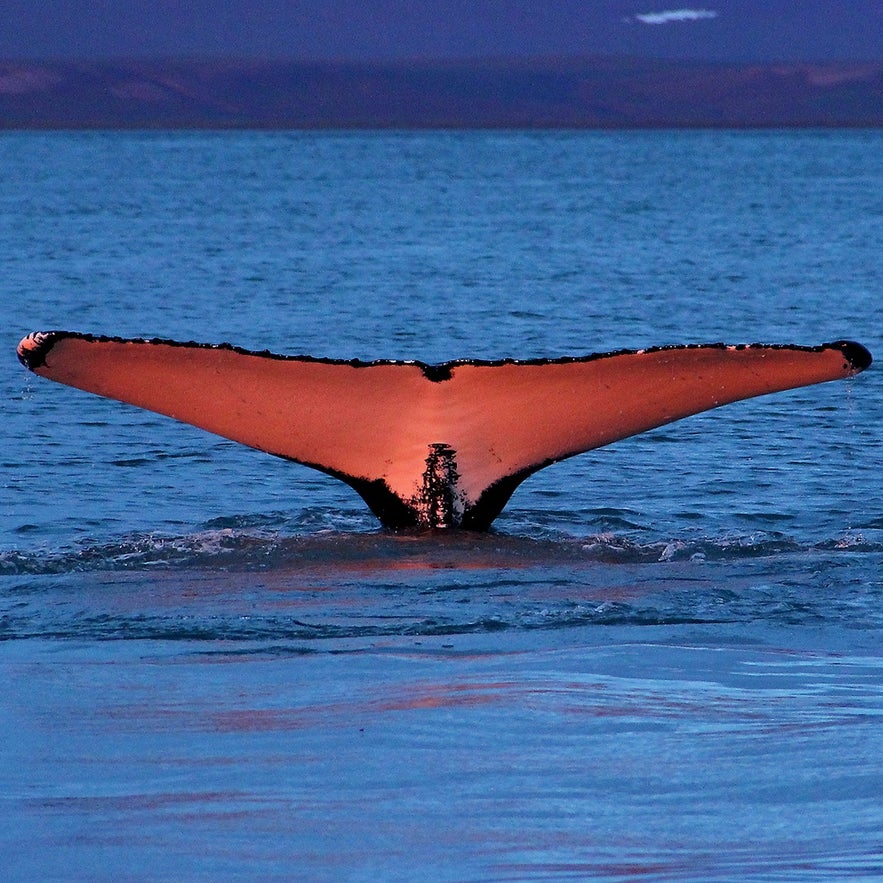
Humpback Whales
Humpback whales can be seen in Iceland during the summer months.
Unlike minke whales, humpbacks are renowned for their gregarious and acrobatic behavior. You could say that humpback whales are the attention-seeking divas of the whale world.
They are a common sight on whale-watching tours, breaching, feeding, or slapping their tails and flukes.
Tour operators from northern towns, such as Akureyri and Husavik, have had seasons in which they have spotted at least one humpback on every excursion

White-Beaked Dolphins
White-beaked dolphins are the most commonly seen dolphin around Iceland, staying close to the shore throughout the year.
They live in pods ranging from a few individuals to a hundred, and, though a bulky species, you can often see them bow-riding, breaching, and playing at the surface.
Not only can you see these dolphins swimming in Iceland's waters, but they can also be seen on the Icelandic 5 krona coin. So if you're lucky enough to see them on your whale-watching tour, you can keep the coin as a (rather cheap) souvenir.
Harbor Porpoises
The adorable harbor porpoise is one of the smallest whale species. It can be seen widely in Iceland's waters throughout the year. However, you might need someone with a trained eye to point them out.
Photo from Wikimedia Commons Library. No edits made.
They're small and shy and usually only appear at the surface, alone or in small groups, for moments at a time. When feeding or threatened, they can race across the surface while splashing their tail, in a behavior known as roosting. It's a dramatic and eye-catching display and would make any whale-watching trip memorable.
Orcas
Despite being called killer whales, orcas are the world’s largest dolphin species, and about 5,000 of them live around Iceland throughout the year, coming closer to the shore during the summer months.
Orcas can appear on whale-watching trips but are not as easy to find as other species due to their transient nature. However, their great size and occasional acrobatic behavior make them a favorite among whale watchers.
Orcas, sometimes called the "wolves of the sea", are voracious eaters and require 400 to 750 pounds (175 to 350 kg) of food every day. In Iceland's waters, they mainly feed on herring and capelin. But they are also known to eat salmon, turtle, shark, and even their fellow sea mammals such as dolphins, seals or porpoises.
If you're eager to go orca watching in Iceland, they're most commonly seen in the East Fjords' rich herring grounds, around the Snaefellsnes Peninsula, and along the South Coast.
Orcas are especially beloved in Iceland because of a certain well-known orca individual that was born in Iceland's waters and later became a star of the silver screen! More on that famous whale later in the article.

The species above are the ones most commonly seen on a whale-watching tour in Iceland. However, a wide array of Icelandic whales can occasionally be spotted in the island's waters. Below is a list of other species that the most fortunate will have the opportunity to see.
Blue Whale and Fin Whale
Humpback and minke whales may be the most common baleen whales, but they are not the only ones that can be seen swimming in Iceland's waters.
The two most enormous creatures ever to live on Earth, blue whales and fin whales, can also be seen throughout the summer months, although rarely.
Blue whales can reach a length of 100 feet (30 meters) and a weight of 165 tons (150 tonnes). Despite their massive size, they feed almost exclusively on krill. Interestingly, their lifespan is similar to that of humans, with individuals reaching an average age of 80 to 90 years.
Fin whales are the second largest animals on Earth, behind only the aforementioned blue whales. On average, they have a size of 65 feet (20 meters) and weigh 40-50 tons. They are more commonly seen around Iceland than the blue whale, with an estimated 30,000 to 40,000 individuals living in the North Atlantic Ocean.
Sperm Whales
Sightings of the largest toothed whale, the mighty sperm whale, are not uncommon off Iceland’s West Coast in spring and summer. There are estimated to be about 23,000 individuals in the sea around Iceland and the Faroe Islands.
Despite the relatively large size of its population, they are rarely spotted since they can hold their breath for an extraordinarily long time. At its longest, the sperm whale can hold its breath for up to two hours and therefore only needs to reach the surface to breathe once or twice during the entire length of a whale-watching tour in Iceland.

Photo by Gabriel Barathieu from Wikimedia Commons Library. No edits made.
Beluga Whales and Narwhals
In the northern waters, groups of belugas and narwhals have occasionally been spotted as stragglers. While their usual habitat is around Greenland, within the Arctic Circle.
Narwhals are famous for the male's tusk, which is, in fact, a long canine tooth. The long tusk is not necessary for survival and serves a similar purpose to the antlers of a stag or the feathers of a peacock, as an assessment of hierarchical status.
Photo from Wikimedia Commons Library. No edits were made.
Beluga whales are closely related to narwhals and belong to the same family of whales. Similarly to narwhals, beluga whales spotted in Iceland are stragglers as their natural habitat is further north in the Arctic Circle.
The Westman Islands are home to the world's first beluga whale sanctuary, where visitors can meet two female whales: Little White and Little Grey, in their new home in Klettsvik Bay.
Long-Finned Pilot Whale
Despite its name, pilot whales are actually a species of large dolphins. They are noticeable for their unusually long pectoral fins.
There are estimated to be about 350,000 individuals in the North Atlantic alone. However, they are a very transient species that spend most of their time offshore, so they are not seen in Iceland's waters as much as one might expect.
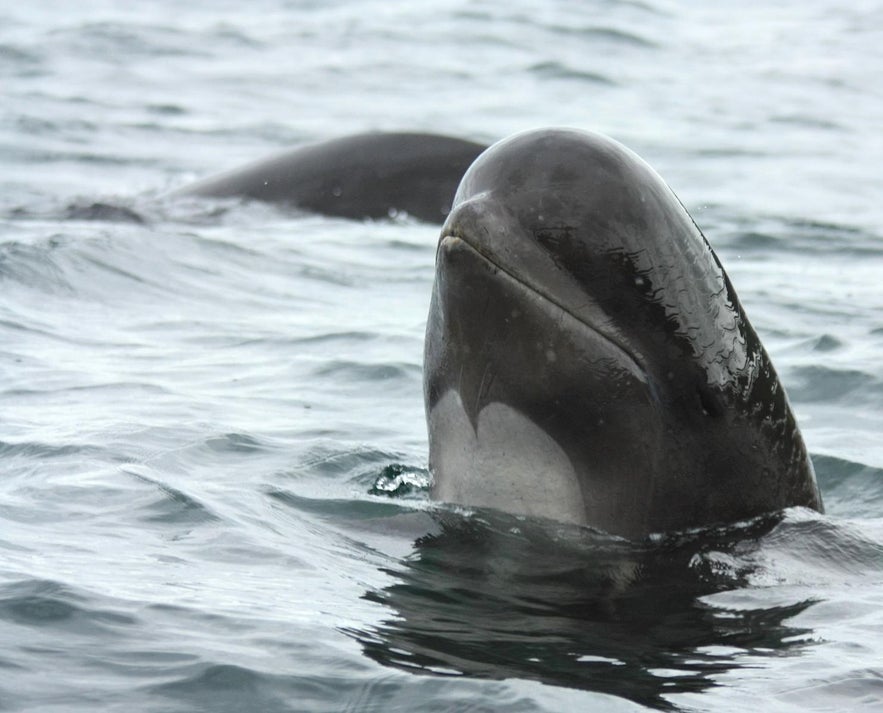
What Are the Best Whale Watching Tours in Iceland?

We advise you to check out this list of whale-watching tours to see all of the current options. You’ll be able to choose your tour from various vessels, ranging from traditional Icelandic oak boats to modern RIB speedboats, and tours lasting from a couple of hours to whole days.
The puffin breeds in large colonies on offshore islands and coastal cliffs, and therefore some tours include puffin watching. So you can check two things off your must-see list at once.
Below is a list of the most affordable Iceland whale-watching tours, sailing from the country’s main whale-watching ports.
Reykjavik Whale Watching Tour
- Whale Watching Tour from Reykjavik
- Price: about 87 USD
- Chances of seeing a whale: 99 percent
- Availability: all year
- Common species: minke and humpback whale, whale-beaked dolphins, and harbor porpoise
Husavik Whale Watching Tour
- Husavik Traditional Whale Watching
- Price: about 76 USD
- Chances of seeing a whale: 99 percent
- Availability: April to November
- Common species: humpback whales, minke whales, blue whales, and white-beaked dolphins
Akureyri Whale Watching Tour
- Akureyri Whale Watching by Eyjafjord
- Chances of seeing a whale: 95 percent
- Availability: all year
- Common species: humpback and minke whale, harbor porpoise, and white-beaked dolphin
Hauganes Whale Watching Tour
- Whale Watching and Sea Angling
- Price: about 75 USD
- Chances of seeing a whale: 99 percent
- Availability: April to December
- Common species: humpback and minke whale, harbor porpoise, and white-beaked dolphin
Olafsvik Whale Watching Tour
- Whale Watching on the Snaefellsnes Peninsula
- Price: about 74 USD
- Chances of seeing a whale: 95 percent
- Availability: April to October
- Common species: orcas, minke whales, harbor porpoises, white-beaked dolphins, and humpback whales
When Is the Best Time for Whale Watching in Iceland?
You can enjoy whale-watching tours throughout the year, but depending on the whale-watching season, the experience can differ.
There are advantages to Iceland whale watching in summer over winter, and visa-versa, that you should consider before booking your trip. Let us break it down for you.
Whale Watching in Iceland in Summer
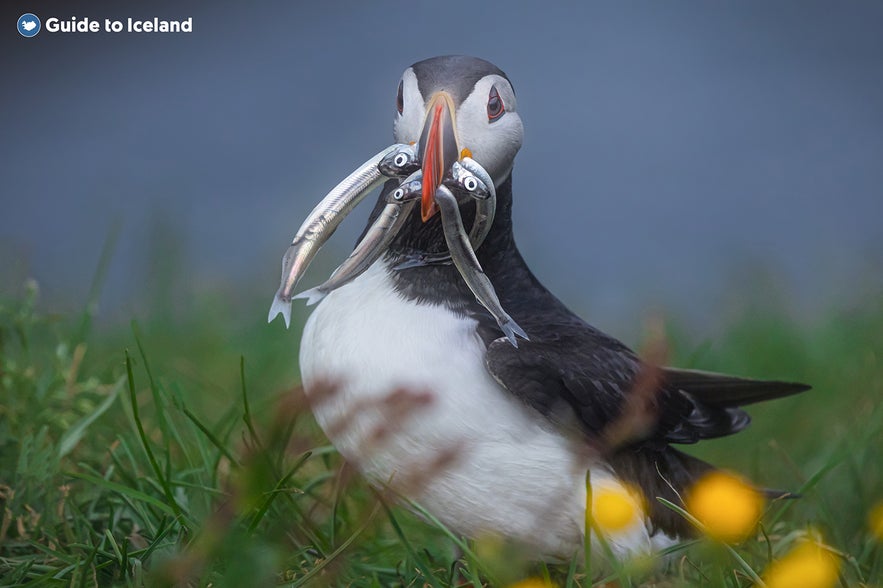 Whale watching in summer has one obvious appeal over whale watching in winter - the weather.
Whale watching in summer has one obvious appeal over whale watching in winter - the weather.
With calmer winds, fewer storms, and clearer skies, not only are whale-watching tours less likely to be canceled, but your chances of seeing cetaceans breaking the flat surface of the water are much higher.
Furthermore, standing on the deck for the tour's duration is more comfortable and a lot more enjoyable.
However, the balmier weather is not the only reason whale watching in summer has advantages over whale watching in winter. The second main draw is the greater diversity of marine life.

As a result, between April and October, you can expect to see some of the world's largest creatures on your whale-watching tour in Iceland.
No matter the port you leave from in summer, you have an excellent chance of seeing minke and humpback whales.
It’s also worth noting that the white-beaked dolphins and harbor porpoises that frequent Iceland’s waters year-round are just as common in the summer months.
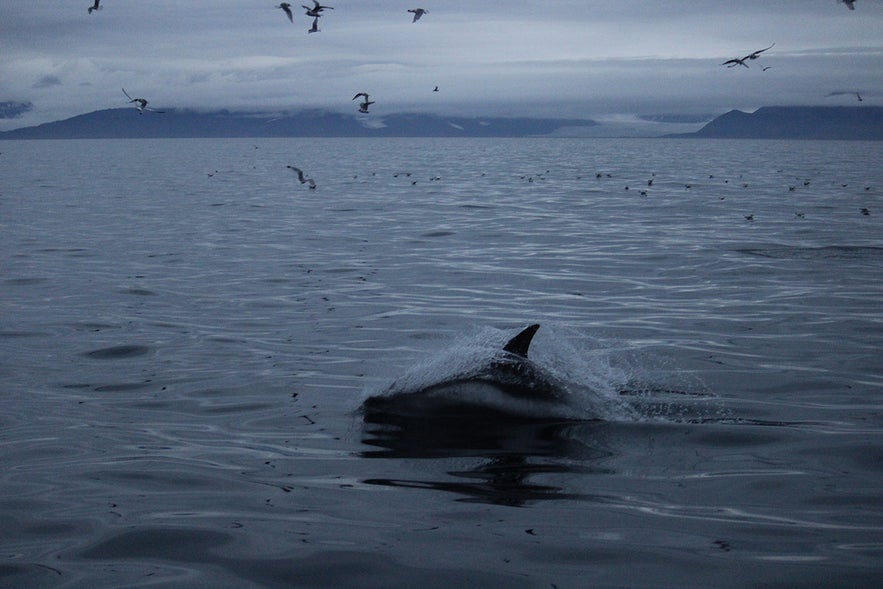
Photo from Wikimedia Commons Library. No edits made.
Though they prefer deeper water than those in Faxafloi Bay, sperm whales and northern bottlenose whales are also more commonly found in Iceland in summer.
You can often see sperm whales in Breidafjordur Bay, where the water is deep enough for them to hunt. Northern bottlenose whales are more randomly distributed offshore but occasionally come into shallower seas when pursuing prey.
However, these are not the only whale species that come to Iceland in summer and make each whale-watching tour that much more spectacular.
Basking sharks, the second-largest fish species, can also be found cruising near the surface occasionally during this season.
These enormous, prehistoric creatures move slowly and have a very calm nature, meaning sightings often last longer than with the whales, who dive to feed.
In addition to whales, you can see birds such as arctic terns, great skuas, and puffins on tours from Reykjavik, Akureyri, Husavik, and the Snaefellsnes peninsula. They're frequently spotted bobbing on the water's surface, circling overhead, or diving for fish.
Another advantage of whale watching in the summer is that you can partake in a smaller vessel such as a RIB for a much closer, more personal encounter. The best option for a RIB boat whale-watching tour is from Reykjavik.
Whale Watching in Iceland in Winter

Despite the many advantages of summer whale-watching tours, going whale-watching in the winter also has its benefits.
First, winter whale-watching tours are much less busy. The summers are high-season for the number of visitors in Iceland, making whale watching in the winter less crowded.
If you don't mind bracing cold winter conditions, you are likely to have a lot more space to search for sea mammals and spot them from the viewing deck when they do appear.

Regarding the cetaceans you’ll see on winter whale-watching tours, the most common are white-beaked dolphins and harbor porpoises.
However, it's not unheard of for great whales to occasionally linger throughout winter, so it’s reasonable to hope to see minke whales and occasionally humpbacks.
The second advantage of whale watching in winter applies solely to whale watching in certain areas. Breidafjordur bay, between the Westfjords and Snaefellsnes peninsula, is a herring wintering ground, and the abundance of food attracts many predators.
The apex predator of the ocean around Iceland, the orca, is, therefore, more common to see in Breidafjordur in the winter rather than in the summer.
The herring in Breidafjordur also means that humpbacks who linger throughout winter will often congregate there.
Meanwhile, in North Iceland, you are far more likely to see belugas than you would be during summer.
While these curious, gregarious animals are native to Iceland's waters and only come here by chance, this occurs when they have migrated away from the Arctic into waters with less ice.
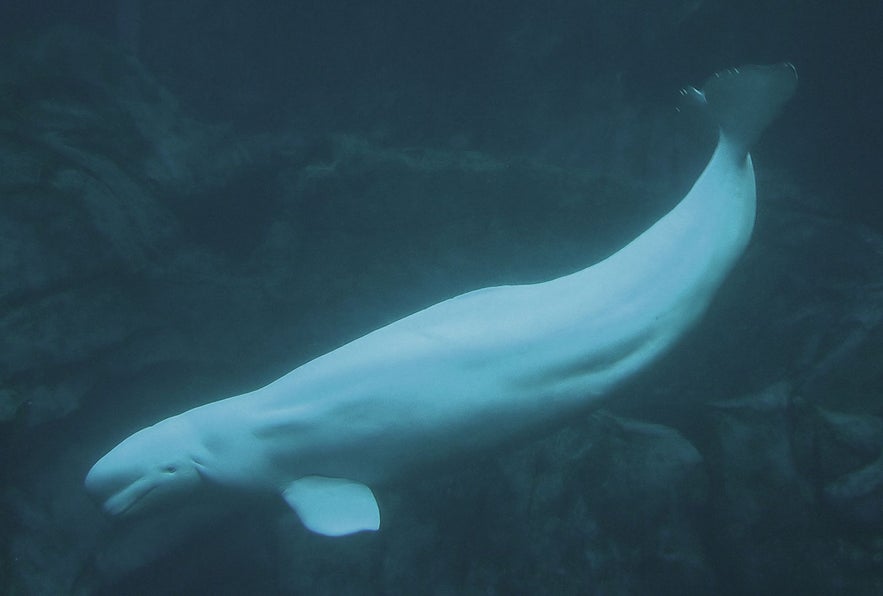
A final advantage of whale watching in winter is that it allows you to experience some incredible nature, regardless of the wildlife you may encounter.
Searching for whales in Iceland while surrounded by the snowy mountains of Eyjafjordur fjord, for example, makes the scene even more spectacular and will make the sighting of a whale all the more dramatic.
There’s also the slight chance to see the northern lights on a winter whale-watching tour, which would undeniably be an unforgettable experience.
Should You Experience Iceland Whale Watching During Summer or Winter?
Wondering when you can see whales in Iceland? Whale watching is usually more enjoyable, successful, and rewarding during summer.
The exception to this is on tours from the Snaefellsnes Peninsula due to the success rates of seeing orcas.
Regardless, excursions go on throughout the year for a good reason. Iceland has an abundance of cetaceans you can reliably see, irrespective of the whale-watching season. So, whichever season you travel in, you’ll have a wonderful Iceland experience.
Where Is the Best Place for Whale Watching in Iceland?
The time of year you decide to go whale watching and the port you choose to depart from on a whale watching tour will affect what you see.
Different species frequent different areas, so if you seek to see a particular animal, you should be aware of the best places in Iceland to go.
Seeing the whales and dolphins of Iceland is a mesmerizing and rewarding experience, and there are a wealth of places from which to do it.
The town of Husavik in North Iceland is dubbed “the whale-watching capital of Europe,” but there are plenty of other places to take a whale-watching tour.

Which location to choose for your tour depends on your expectations. On the most affordable whale-watching trip departing from Reykjavik, the most commonly spotted animals are minke whales, white-beaked dolphins, and harbor porpoises. The chances of seeing humpback whales are much higher on a Husavik whale-watching trip in Skjalfandi Bay in North Iceland.
Reykjavik Whale Watching
If you stay in Iceland's capital city, embarking from Reykjavik’s Old Harbor is the easiest option.
The usual departure point is within easy walking distance from most downtown hotels. As tours tend to last three hours or less, they allow you to enjoy an incredible experience without taking up a decent chunk of your day.
This length also means that if a tour is canceled due to inclement weather or if you didn’t see any whales, you might be permitted to join another tour for free. This arrangement is unlikely to mess up any other plans for those staying in the capital.

The convenience of whale watching in Faxafloi bay is undoubtedly part of its appeal, but it’s not the only lure. In clear weather, you should be able to see a vast amount of iconic Icelandic sites on a tour from Reykjavik.
To the south, you’ll see the cone-shaped volcanoes that line the barren Reykjanes peninsula. Whereas to the north, it’s often possible to see Snaefellsjokull glacier in the distance.
Furthermore, Faxafloi is a reliable place to find white-beaked dolphins, harbor porpoises, and minke whales throughout the year.
In summer, humpbacks are common, and because they nest in the thousands on the islands of Lundey and Akurey, you can spot puffins on almost every outing.
Whale Watching in North Iceland

North Iceland whale-watching tours that leave from Akureyri and Husavik into Eyjafjordur and Skjalfandi Bay, respectively, have the highest success rates in Iceland. Tour operators from both locations experience sightings on 100 percent of tours in summer.
In summer and from these destinations, the main appeal is humpback whales. The wealth of food in the cold northern waters draws them into the fjords, the depths of which still allow them to dive to hunt.
However, humpback whales are not the only common species. As with the rest of the country, harbor porpoises and white-beaked dolphins also frequent the waters.
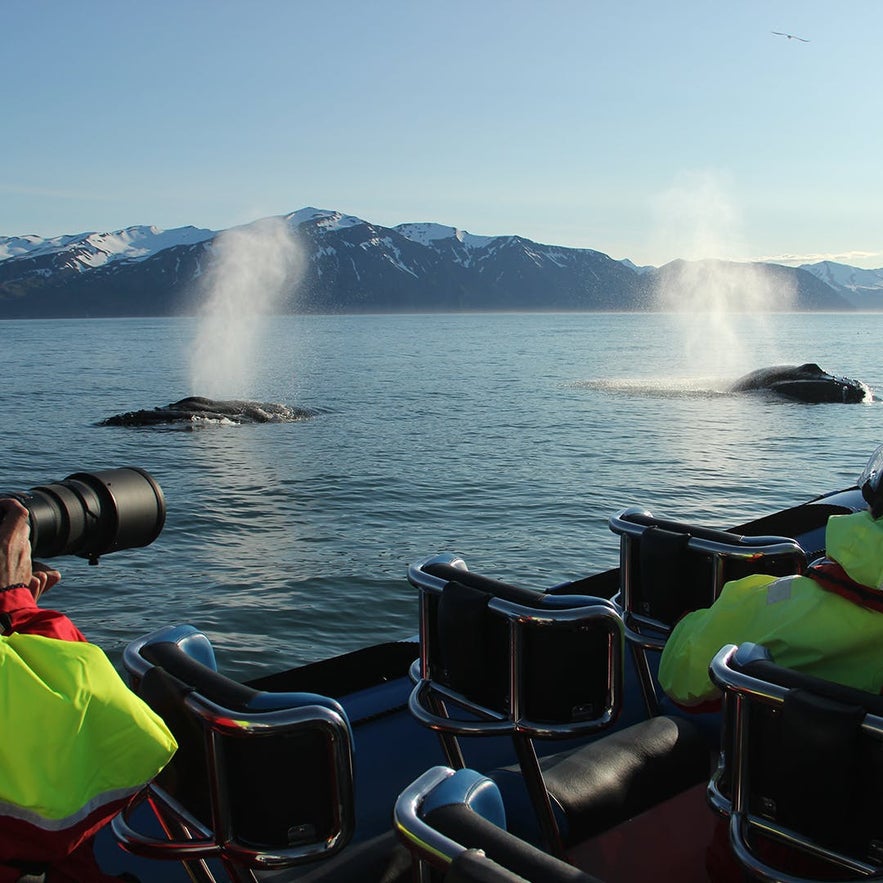
North Iceland is also the best place for your chance of spotting some of the lesser-seen whales.
Blue and fin whales also come there seeking food, although rarely, so do stray beaked whales, narwhals, and belugas.
All 24 species of cetacean you can find in Iceland’s waters have been seen in the north, something no other part of the country can claim.
The difference between whale watching in Akureyri and Husavik is slight but exists.
Skjalfandi has a higher number of cetaceans than Eyjafjordur. Having a higher number of animals means more chances of sightings and watching exciting behaviors such as breaching, fluking, tail-slapping, and spy-hopping.

Meanwhile, Akureyri is simply a more convenient place to go whale spotting. It's the largest town outside of the greater Reykjavik area, meaning it has more activities and sites you can fill your day with when your whale watch is complete.
That being said, Husavik’s services have grown with the rising number of visitors over the past decade, so this difference may soon become negligible.
Puffins and other seabirds can be seen on tours from both Akureyri and Husavik, as they nest in the cliffs around Eyjafjordur and on the islands in Skjalfandi.
Whale Watching From the Snaefellsnes Peninsula
The Snaefellsnes Peninsula is better known for its excellent sites on land than for its sea life, but avid whale watchers will find it a hidden gem.
Tours leaving from Grundafjordur take you into Breidafjordur, which, as mentioned, is a wintering herring ground that attracts dolphins, porpoises, humpback whales, and, most uniquely, orcas.
Orcas live all around Iceland but tend to be transient. They move where the food goes. Therefore, they're rarely seen in other parts of the country, particularly in Faxafloi Bay.
While you can see them most commonly in winter, Breidafjordur is also well worth visiting in summer, as it's the best place in the country to find sperm whales.

Though these animals are abundant around Iceland, they tend to hunt offshore; they are rarely seen. However, it should be noted that even in Breidafjordur, this is not a common occurrence.
The Verdict?
The best whale watching in Iceland is undoubtedly out of Husavik. That being said, each whale-watching port has unique factors that may override the quality of the whale-watching experience in Husavik.
For location and time management, considering most people joining whale-watching tours are on holiday and want to pack in as many different activities each day as possible, Reykjavik and Akureyri are more convenient.
For avid whale watchers who want to see less commonly spotted animals around the world, then a tour from the Snaefellsnes peninsula wins out.
Whales in Icelandic Folklore and Sagas
Throughout Iceland's history, whales had, in some cases, positive connotations, such as the Icelandic word for a stroke of good luck, 'hvalreki', literally translating to 'beached whale'.
That's because, in the harsh conditions of medieval Iceland, where food was hard to come by, a beached whale was incredibly fortunate as it meant an abundance of food that could last throughout the winter.
In other cases, they were considered terrifying creatures with many folkloric stories surrounding menace.
The map above shows 16th-century depictions of the many sea creatures thought to live in Iceland's waters. Interestingly, each creature is marked with a letter from the alphabet, corresponding to a compendium that details information about the creature. Some of these creatures are actually well-known whale species we've covered in this article.
For example, the creature marked L is supposed to be a blue whale, while the creature marked C depicts a sperm whale. Obviously, these are not anatomically correct illustrations, but it indicates that folklore about menacing sea monsters has an inkling of truth in them.
In Icelandic folklore, exist many stories of so-called 'illhveli', which literally translates to 'evil whale'. These whales were said to have evil intent and deliberately stalked and tried to sink boats by tipping them over.
The most evil of the 'illhveli' was Raudkembingur, a type of whale with a spiky reddish comb along his head. This whale was said to have a thirst for killing and wrecking ships. Below you can see a depiction of a Raudkembingur from a 17th-century manuscript.
Evil whales are a surprisingly common occurrence in Icelandic stories. As early as in the Heimskringla saga of King Olaf Tryggvason, it's written that when the devious King Harald Bluetooth was planning to invade Iceland, he had a sorcerer take the form of a terrible whale who was to locate the island’s points of vulnerability.
But each time the whale-sorcerer attempted to land ashore, the four land wights of Iceland — the dragon of the east, the eagle of the north, the bull of the west, and the stone giant of the south – sent him cowering back to the sea, rendering the invading king's efforts futile. These four land wights are depicted on Iceland's coat of arms.
Whales aren't the only sea creatures common in Icelandic folklore. Seals are also featured prominently in stories about selkies, creatures who can shed their sealskin and become human.
Although countless legends tell remarkable tales of the meetings between Icelanders and magical whale-like creatures, the first official Icelandic whale-watching ship didn't leave port until 1991, carrying under a dozen curious passengers seeking a personal encounter with the gentle giants of the sea.
- See also: Seals and Seal Watching in Iceland
Keiko the Killer Whale
The most famous whale to grace Icelandic waters is not a magical creature of medieval literature but an aquatic star of Hollywood blockbusters.
Keiko, the male orca who portrayed Willy in the 1993 hit film Free Willy, was captured in Reydarfjordur fjord in East Iceland in 1979 and was originally named Siggi. He was subsequently bought and sold between various aquariums and marine parks, where he learned to perform for audiences before being cast by Warner Brothers Studios.
Following Keiko’s rise to stardom, The Free Willy-Keiko Foundation was established in 1995 to find him a better home. In 1998, the world looked on in amazement as Keiko was loaded aboard a C-130 US-Air Force cargo plane and flown from the United States back home to his birthplace in Iceland.
Keiko would finally be allowed to swim in the ocean again, hoping he would eventually reunite with other killer whales.
Keiko spent the following years in Klettsvik Bay of the Vestmannaeyjar Islands, where he underwent extensive training in preparation for a life of freedom on the open seas.
In August 2002, Keiko finally left Icelandic territorial waters with a group of wild killer whales, but in September, he showed up in a fjord in Norway, desperately seeking human contact.
Keiko’s reintegration into the wild had failed, and on December 12 of the following year, Keiko died of pneumonia while swimming alone in Norwegian waters. He was 27 years old.
No single marine animal has brought more attention to the whales of Iceland than Keiko. Since his passing, whale watching in Iceland has rapidly grown into a flourishing industry.
In 2018 alone, nearly 300,000 people took whale-watching trips from Icelandic harbors—quite a leap from the first tour of less than a dozen people in 1991.
Keiko's old home in Klettsvik Bay now has permanent residents once more. Two beluga whales, Little Grey and Little White were brought from an amusement park in Shanghai to live in the now-called Beluga Whale Sanctuary on June 20, 2019.
Commercial Whaling in Iceland
Paradoxically, the old whaling vessels in Reykjavik Harbor are anchored at the dock on which Iceland's largest whale-watching society operates.
Whaling has been practiced in Iceland from as early as the 12th century. Despite Keiko's popularity and the recent surge in whale-watching tourism, Icelanders remain one of only a handful of nations on Earth that still hunt and kill whales.
In 1986, Iceland’s whaling industry became the subject of worldwide scrutiny when anti-whaling activists sank the whaling vessels Hvalur 6 and Hvalur 7, which made up half of the Icelandic whaling fleet.
The incident sparked a fierce international debate between various radical and moderate animal rights organizations.
The outcome of that debate was not in the anti-whalers' favor. Most environmentalists denounced the tactics as too extreme, with some going as far as branding the incident as an act of terrorism.
Domestically, public opinion immediately swayed in favor of the whaling industry, with the general population viewing the incident as a gross outside intrusion into domestic affairs.
The two sunken vessels were promptly raised, and for several years, whaling continued, backed by even greater public approval than before.
However, with the rise of the Icelandic whale-watching industry, whaling is becoming less popular among the general Icelandic population, with Icelanders consuming only a fraction of Icelandic whale meat.
Have you been whale watching in Iceland? What whales did you see? What time of year did you go? If you haven't been whale watching, what species of sea mammals are you hoping to see? Let us know more about your whale-watching experience or any inquiries you might have in the comments below.
Otros artículos interesantes

18 Cosas que Hacer y Lugares que Visitar en Islandia
Encuentra las mejores cosas que hacer en Islandia y entérate de dónde ir y qué ver. Ya sean maravillas naturales, experiencias culturales o joyas escondidas, sigue leyendo y descubre todas las atrac...Leer másLa Guía Definitiva de Islandia en Marzo
Descubre todo lo que debes saber en tu visita a Islandia en marzo. Conoce qué actividades se ofrecen durante este mes, como las cuevas de hielo y la caza de auroras boreales. Entérate de las mejores...Leer másLa Guía Definitiva de Islandia en Diciembre
Descubre las mejores cosas que hacer en Islandia en diciembre, el mes perfecto para viajar a Islandia gracias a las excelentes condiciones de observación la aurora boreal y al magnífico espíritu festi...Leer más

Descarga la mayor plataforma de viajes a Islandia en tu móvil para gestionar tu viaje al completo desde un solo sitio
Escanea este código QR con la cámara de tu móvil y pulsa en el enlace que aparece para añadir la mayor plataforma de viajes a Islandia a tu bolsillo. Indica tu número de teléfono o dirección de correo electrónico para recibir un SMS o correo electrónico con el enlace de descarga.





























